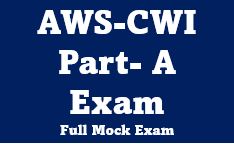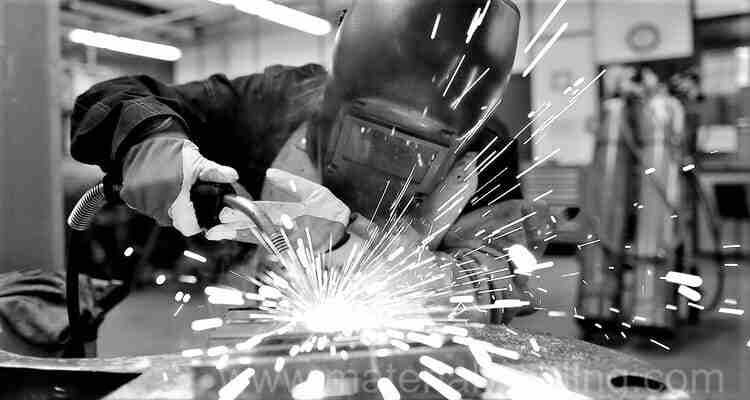ASNT Level 3 Basic Exam Questions
👉👉👉 Practice 2500+ ASNT Level III Basic Exam Question and 15+ Free Mock Exams 👈👈👈
- What is NOT mentioned as a component used in sandwich panels?
- a) Foam
- b) Aluminum
- c) Honeycomb
- d) Adhesives
- What is a characteristic feature of 3-D woven fabrics used in composites?
- a) They have inherent crimp or waviness in the interlaced fibers
- b) Fibers are laid in a plane with small thickness compared to its dimensions
- c) They lack reinforcement in the Z-direction
- d) Fibers or yarns are intertwined in the X and Y directions only
- Which type of glass fiber is known for its stiffness and high tensile strength?
- a) E-glass
- b) S-glass
- c) C-glass
- d) R-glass
- What is the primary material used in fairings, radomes, and secondary aerospace structures due to its desirable properties?
- a) Carbon fiber
- b) Aluminum
- c) Glass fiber
- d) Kevlar fiber
- What is the primary purpose of applying adhesives as a solution in a volatile liquid?
- a) To increase joint flexibility
- b) To decrease joint strength
- c) To draw adhesive to the bare material surfaces
- d) To speed up the curing process
- Which type of reinforcement fiber is characterized by having each filament the same unbroken length as the strand?
- a) Continuous fiber
- b) Discontinuous fiber
- c) Woven fabric
- d) Chopped fiber
- Which type of glass fiber is known for its excellent electrical insulation characteristics?
- a) E-glass
- b) S-glass
- c) C-glass
- d) T-glass
- What is the primary advantage of using glass fiber as a reinforcement agent in composites?
- a) High modulus of elasticity
- b) Conductivity to heat and electricity
- c) Resistance to heat, fire, moisture, and chemicals
- d) Expensiveness compared to other materials
- Which form of glass fiber material is commonly used in the marine and industrial composites industries?
- a) Continuous fiber
- b) Chopped fiber or chopped strand mat
- c) Woven fabric
- d) Discontinuous fiber
- What is a characteristic feature of 2-D weaving used in composites?
- a) Fibers are intertwined in the X, Y, and Z directions
- b) Fibers are laid in a plane with considerable thickness
- c) It is a relatively low-speed and expensive process
- d) Fibers have inherent crimp or waviness
- What are the two prerequisites for processing in pressworking operations?
- a) Low tooling cost and high ductility
- b) Sufficient quantities and high ductility
- c) Low ductility and high tooling cost
- d) Specialized equipment and high quantities
- In pressworking operations, what type of materials are shearing operations possible on?
- a) Ductile materials only
- b) Brittle materials only
- c) Nearly all sheet materials
- d) Composite materials only
- What is the primary cause of material failure in pressworking operations?
- a) Elastic deformation
- b) Frictional forces
- c) Controlled loading
- d) Chemical reactions
- What is a characteristic feature of the majority of pressworking operations regarding tooling?
- a) Low cost
- b) Standardized die set attachment
- c) Use of specialized equipment
- d) No need for critical adjustments
- Which member of the pressworking tooling ensures proper alignment of the punch and die?
- a) Bolster plate
- b) Ram
- c) Guide posts
- d) Punch shoe
- What is a common feature of most new developments in pressworking?
- a) High production quantities
- b) High tooling costs
- c) Use of matching dies
- d) Low-tooling-cost methods
- Which high-energy-rate forming method involves detonating high explosives to form sheet metal structures?
- a) Hydroforming
- b) Explosive forming
- c) Electromagnetic forming
- d) Pneumatic forming
- What advantage does explosive forming have over conventional press forming?
- a) Lower capital investment
- b) Longer production time
- c) Higher tooling costs
- d) Inability to shape large sizes
- What type of pressworking operation is particularly useful for bulging operations in explosive forming?
- a) Drawing
- b) Shearing
- c) Stamping
- d) Bending
- What is a principal restriction of explosive forming processes?
- a) High production quantities
- b) Short production time
- c) Low deformation capabilities
- d) Economic feasibility for quantity production
- What is the primary function of a cutting tool?
- a) Generating heat
- b) Applying external loads to the work material
- c) Lubricating the workpiece
- d) Controlling chip formation
- What forces are created by the motion of the cutting tool?
- a) Radial and axial forces
- b) Normal force and shear force
- c) Tension and compression forces
- d) Friction force and cutting force
- In which direction are maximum shear stresses induced within the material during cutting?
- a) Parallel to the tool face
- b) Perpendicular to the tool face
- c) At an angle of approximately 45° to the direction of the resultant
- d) Along the direction of the tool motion
- What primarily influences the nature of the chip formed during machining?
- a) Tool material
- b) Cutting speed
- c) Workpiece material and force direction
- d) Lubrication method
- What are the three distinct types of chips produced in machining?
- a) Radial, axial, and oblique
- b) Continuous, segmented, and intermittent
- c) Brittle, ductile, and elastic
- d) Longitudinal, transverse, and oblique
- Which material characteristic primarily determines whether chips produced during machining will hold together or break into segments?
- a) Hardness
- b) Ductility
- c) Elastic modulus
- d) Thermal conductivity
- What type of chips do brittle materials primarily produce during machining?
- a) Continuous chips
- b) Intermittent chips
- c) Segmented chips
- d) Longitudinal chips
- Why do most chips from ductile materials tend to form somewhat intermittently?
- a) Due to low cutting speed
- b) Because of high tool hardness
- c) As a result of machining vibrations
- d) To minimize tool wear
- What is the primary factor influencing the characteristics of the chip formed during machining?
- a) Tool geometry
- b) Workpiece temperature
- c) Cutting fluid viscosity
- d) Machining process speed
- Which force primarily causes the separation of a chip from the parent stock during machining?
- a) Normal force
- b) Friction force
- c) Tensile force
- d) Shear force
Answers
- Answer: b) Aluminum
- Answer: d) Fibers or yarns are intertwined, interlaced, or intermeshed in the X, Y, and Z directions.
- Answer: b) S-glass
- Answer: c) Glass fiber
- Answer: c) To draw adhesive to the bare material surfaces
- Answer: a) Continuous fiber
- Answer: a) E-glass
- Answer: c) Resistance to heat, fire, moisture, and chemicals
- Answer: b) Chopped fiber or chopped strand mat
- Answer: b) Fibers are laid in a plane with small thickness compared to its dimensions
- Answer: b) Sufficient quantities and high ductility
- Answer: c) Nearly all sheet materials
- Answer: c) Controlled loading
- Answer: b) Standardized die set attachment
- Answer: c) Guide posts
- Answer: d) Low-tooling-cost methods
- Answer: b) Explosive forming
- Answer: a) Lower capital investment
- Answer: a) Drawing
- Answer: d) Economic feasibility for quantity production
- Answer: b) Applying external loads to the work material
- Answer: b) Normal force and shear force
- Answer: c) At an angle of approximately 45° to the direction of the resultant
- Answer: c) Workpiece material and force direction
- Answer: b) Continuous, segmented, and intermittent
- Answer: b) Ductility
- Answer: c) Segmented chips
- Answer: c) As a result of machining vibrations
- Answer: a) Tool geometry
- Answer: d) Shear force






